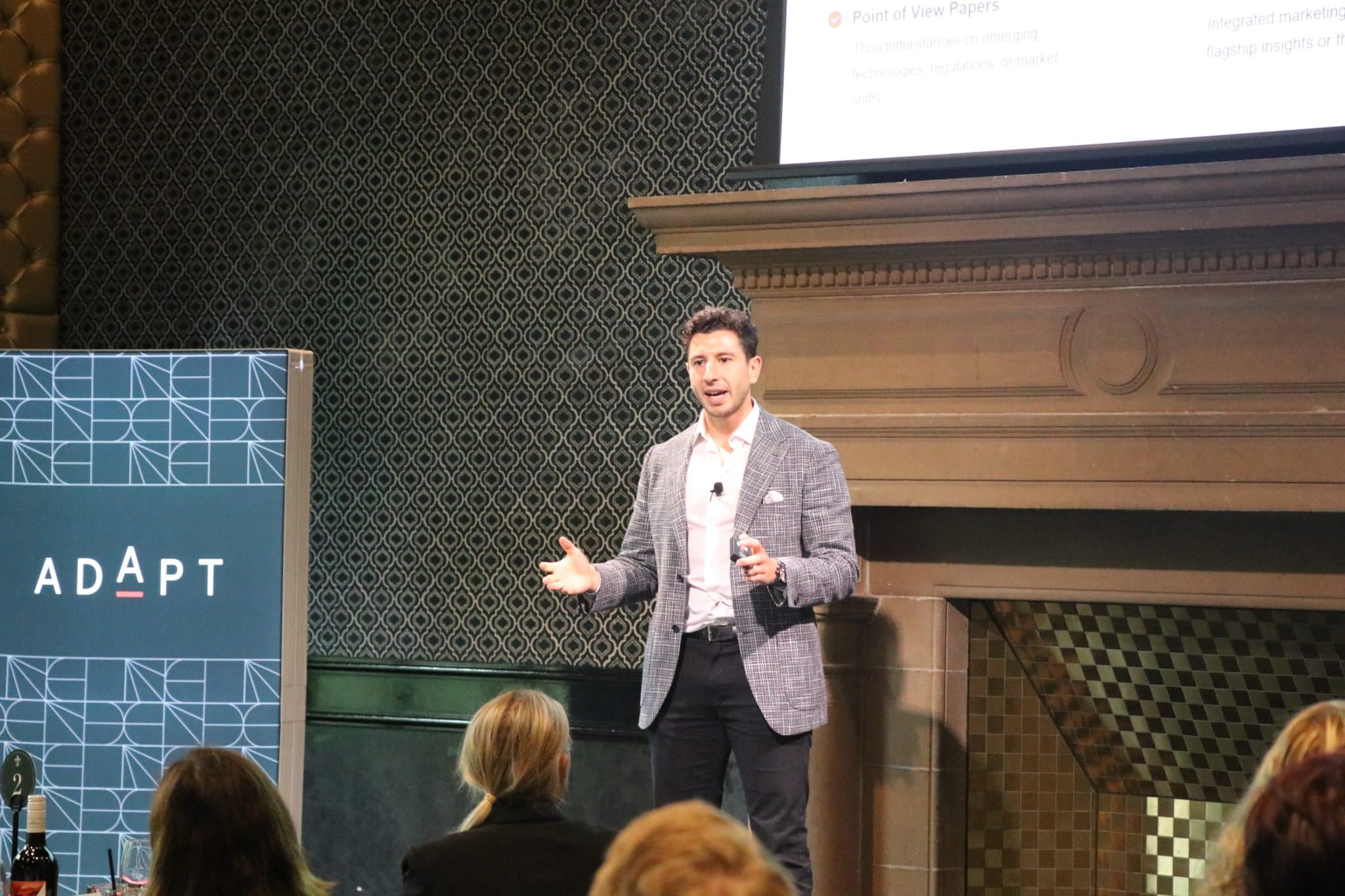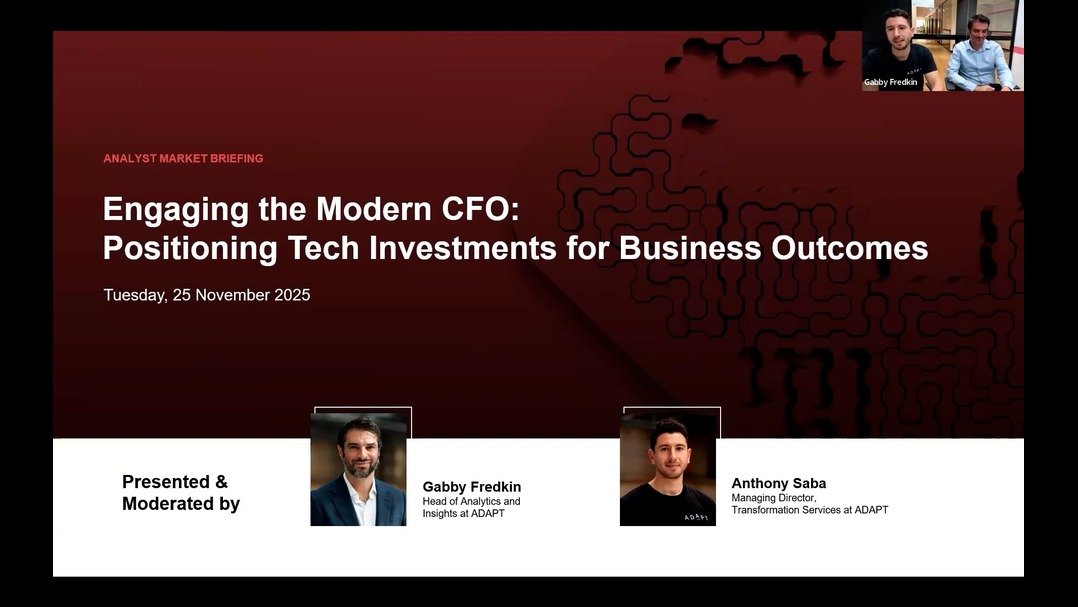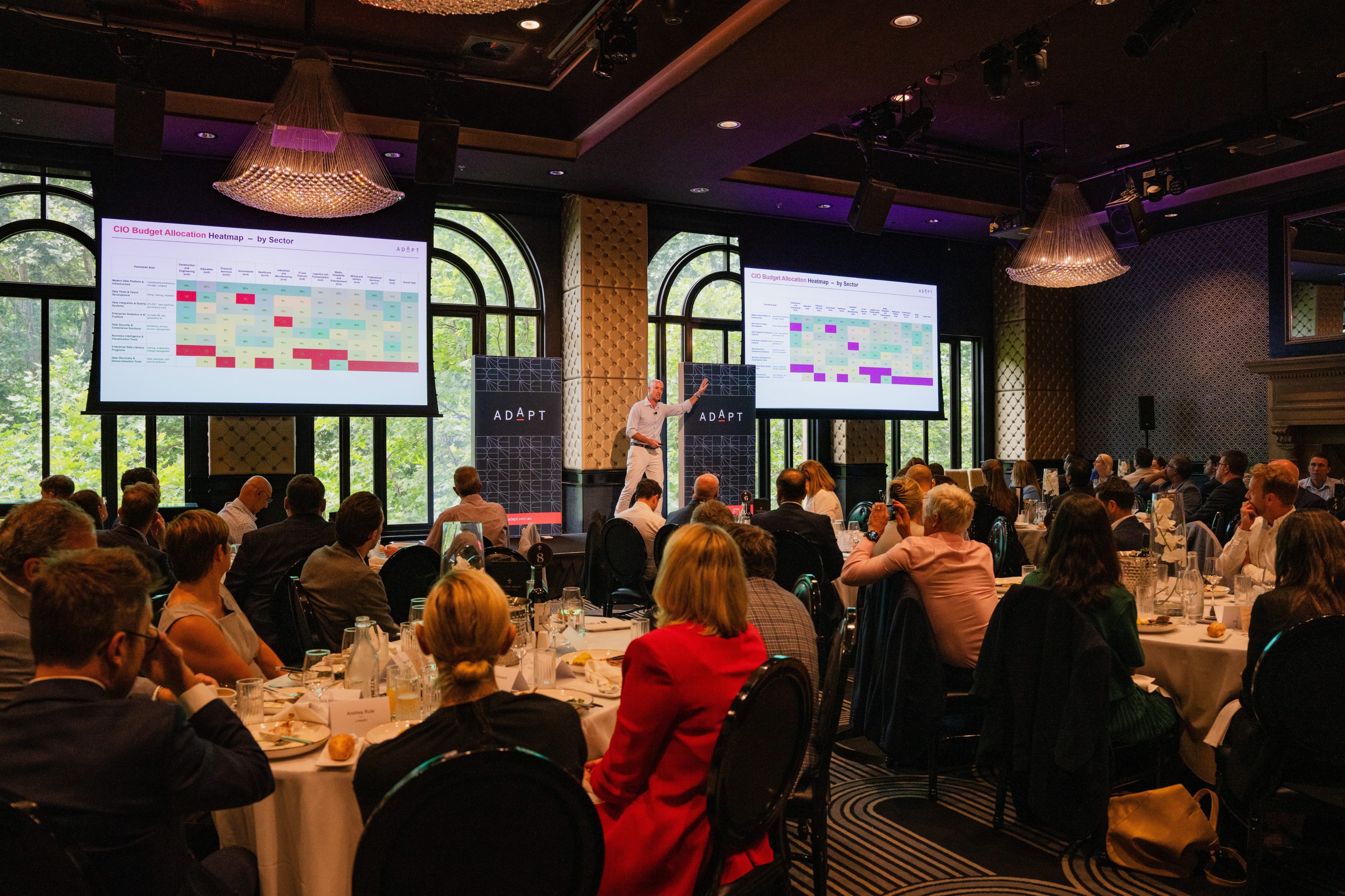What’s powering sales and marketing success in Australia’s tech landscape for 2025?
At ADAPT's CMO Workshop, 70+ B2B sales and marketing leaders explored AI, customer engagement, and insights from top execs to align strategies for 2025's evolving challenges.
At ADAPT’s CMO Workshop, 70+ B2B sales and marketing leaders explored AI, customer engagement, and insights from top execs to align strategies for 2025’s evolving challenges.
As businesses look ahead to 2025, achieving strategic success hinges on a deep understanding of customers, aligning messaging with their priorities, and addressing organisational challenges with actionable insights.
At the recent ADAPT CMO Workshop, 70+ B2B technology marketing leaders gathered to explore the evolving dynamics of customer engagement, technology adoption, and the role of AI in reshaping sales and marketing strategies.

Drawing on insights from over 1,000 executive surveys across Australia’s top 400 organisations—representing 60% of the nation’s GDP and employing nearly a quarter of the workforce—ADAPT presented a roadmap for CMOs to thrive in an increasingly complex environment.
The challenge: navigating expanding buyer groups and prolonged sales cycles
Jim Berry, Founder and CEO of ADAPT, opened the event with a candid reflection on the state of Australian organisations.
He highlighted the growing pressure on CMOs to deliver value amidst economic challenges, elongated sales cycles, and increasingly diverse buyer personas.
His insights set the stage for discussions on how marketers can pivot from product-led campaigns to customer-centric strategies.
Jim emphasised that today’s buyer groups are no longer confined to a single decision-maker.

Instead, they involve a network of influencers with varied priorities, making the sales process less predictable.
In this context, CMOs need a clear understanding of their customers’ pain points and a robust strategy to address them effectively.
Addressing organisational priorities, barriers, and opportunities in transformation
ADAPT’s data revealed a strong focus among Australian executives on cost optimisation, tech modernisation, and readiness for transformative technologies like AI.
64% of CIOs cited resource constraints as a major hurdle, while 66% are prioritising vendor consolidation, aiming to reduce reliance by 20%.

This highlights the demand for streamlined, high-value solutions that deliver measurable results and align with organisational goals.
Key priorities for FY 2024-25 include tech modernisation and simplification, optimising costs, and improving operational effectiveness.
Supporting these goals, top initiatives focus on application modernisation and integration, bolstering cyber security, and operating model evolution, which underscore the need for scalable, secure, and integrated solutions to drive efficiency and growth.
For B2B tech marketers, aligning with these priorities means demonstrating value through tailored, outcome-driven messaging and positioning as strategic partners.
However, organisations face significant execution barriers, including a lack of funding, insufficient staff in key roles, and skills gaps.
By addressing these pain points with clear solutions and actionable insights, marketers can empower executives to overcome challenges and deliver transformation.
Meanwhile, AI, while central to many organisations’ strategies, remains a challenge.
Only 30% feel fully prepared to adopt AI in the next 12 months, with barriers like data quality issues, lack of skills, and cultural resistance hindering progress.

Organisations with modernised infrastructure are better positioned, achieving 2.3 times higher success rates in AI integration.
Jim encouraged marketers to align their messaging with these realities, focusing on incremental improvements that balance ambition with feasibility.
CFOs: strategic partners in technology decisions
A key theme at the ADAPT CMO Workshop was the growing role of CFOs in shaping technology strategies.
ADAPT’s research revealed a significant shift, with the strategic role of CFOs in evaluating tech investments increasing by 29% over the last 12 months, and 44% of CFOs now actively involved in tech strategy discussions.

However, despite their involvement, CFOs face challenges with visibility into technology costs and value.
This lack of visibility complicates decision-making and highlights the need for better tools and processes to quantify ROI.
CFOs remain focused on three key goals: optimising costs, creating new revenue streams, and tech modernisation and simplification.
When it comes to AI adoption, CFOs prioritise efficiency, enablement, and accuracy, ensuring AI investments deliver measurable results while maintaining financial discipline.
Leveraging customer insights for competitive advantage
Anthony Saba, Executive Director of Research & Advisory at ADAPT, emphasised the importance of personalised messaging that directly aligns with industry-specific challenges, noting that generic approaches no longer resonate in today’s competitive market.
He also addressed the growing need for collaborative, partner-driven campaigns that extend reach and engagement, explaining that these partnerships bring shared expertise and innovation to the table.

However, he pointed out a persistent gap in many marketing strategies: the lack of localised insights tailored to Australian customers.
This oversight, he argued, limits the ability of campaigns to connect meaningfully with their audience, creating an opportunity for CMOs to develop strategies rooted in regional realities.
He outlined the primary goals for sales and marketing leaders as driving lead generation, enhancing brand differentiation, and improving customer engagement.

Achieving these goals, Anthony noted, requires tailored content and buying journeys that reflect individual customer needs.
By addressing these priorities and leveraging AI effectively, organisations can build deeper connections with customers, drive growth, and position themselves as trusted partners in solving business challenges.
A roadmap for sales and marketers in 2025
To drive growth in 2025, B2B tech sales and marketing leaders must shift from product-focused approaches to aligning with Australian executives’ priorities.
- Showcase solutions that support priorities like tech modernisation, cost optimisation, and AI readiness to align with organisational goals.
- Craft outcome-driven messaging that highlights business value and measurable ROI, helping executives justify IT investments and secure internal funding.
- Help tech leaders gain better visibility into IT spending and measure ROI by offering tools that track outcomes and optimise value delivery.
- Provide solutions to overcome key barriers, such as data governance issues, resource constraints, and legacy systems, enabling smoother transformation efforts.
- Position as trusted advisors by building business cases with clear metrics, use cases, and strategic benefits to help executives advocate for critical IT initiatives.
By leveraging hyper-localised market insights to foster deeper connections with customers and aligning strategies with evolving demands, marketers can unlock new opportunities and deliver lasting value in an era defined by innovation and transformation.


























